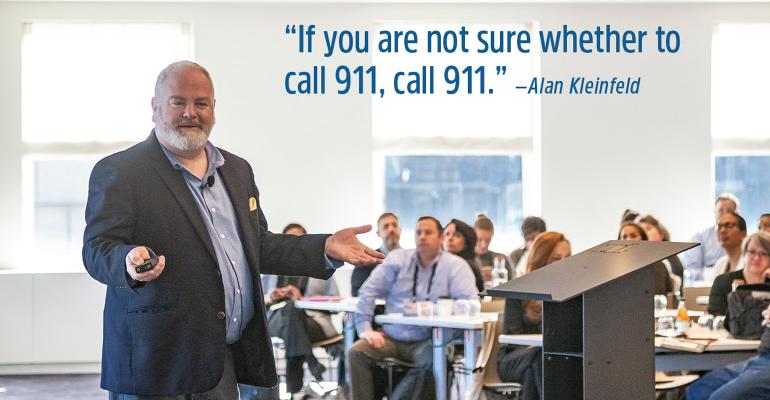Creating an emergency plan can seem overwhelming, but at the Risk360 conference Alan Kleinfeld, CMP, CMM, director of Arrive Management Group, reminded the audience that they were not alone. The following resources cover everything from a framework for your written plan, training programs on first aid and medical equipment, and companies that you can call on for expert advice.
Federal Emergency Management Agency
Emergency Preparedness Resources for Business
Emergency Management Guide for Business and Industry
National Fire Protection Association
NFPA 1600 Standard on Crisis Management
American Hotel and Lodging Educational Institute training programs.
The American Red Cross offers online classes in first aid and the use of epi pens and AEDs.
There are also organizations that can provide monitoring, expert advice, and aid for overseas meetings, including SOS International and WorldAware.
The tips below will help you develop a plan and train to use it, but being prepared for an emergency does not mean you have to deal with it. If in doubt, follow Kleinfeld’s advice: “If you are not sure whether to call 911, call 911.”
Creating Your Plan
• Tailor your plan for each event, including updated contact information for each venue and the location of emergency equipment and medical supplies on site.
• Train your staff on each plan.
• The best plans use the format, “If this, then that.”
• Does your plan work for people with disabilities? Are there alternate escape routes for people with mobility issues? Do you have signs or presentation slides for attendees with hearing loss who might not understand announcements? Is your staff trained to guide blind attendees in an emergency
• Print a pocket-size version of your plan. During an emergency, you might not have access to digital content. Wellspringinfo.com is one of many firms that do this.
• Remember that emergencies come in all shapes and sizes. Case in point: CES took place in Las Vegas shortly after the Mandalay Bay shooting; event management spent a lot of time and resources planning for an active-shooter emergency, including instituting bag checks and other security measures. But the actual disruption they suffered was a power outage. Don’t focus on the headline-grabbing emergencies and forget about the mundane ones.
Staff Training
• Distribute updated plans to team members and discuss them so everyone knows their roles.
• Run regular tabletop exercises for each scenario to ingrain the information.
• Rehearse plans under different conditions, including in the dark with flashlights.
• Teach the “OODA loop” so your staff is alert and responsive to danger:
• Observe: What is happening around you?
• Orient: Make sense of what you’re seeing; does it look right?
• Decide: What are you going to do: Call for help? Investigate? Intervene?
• Act: Execute your decision quickly.
The average person takes 8-12 seconds to go through an OODA loop; trained people can do it in 3-5 seconds.
This is one of five articles on actions you can take to make your meeting more secure. Also read:
Risk360: Do One Thing
Risk360: Choosing a Location or Venue
Risk360: The Contract
Risk360: Communications Policy
Risk360: On-Site Safety





